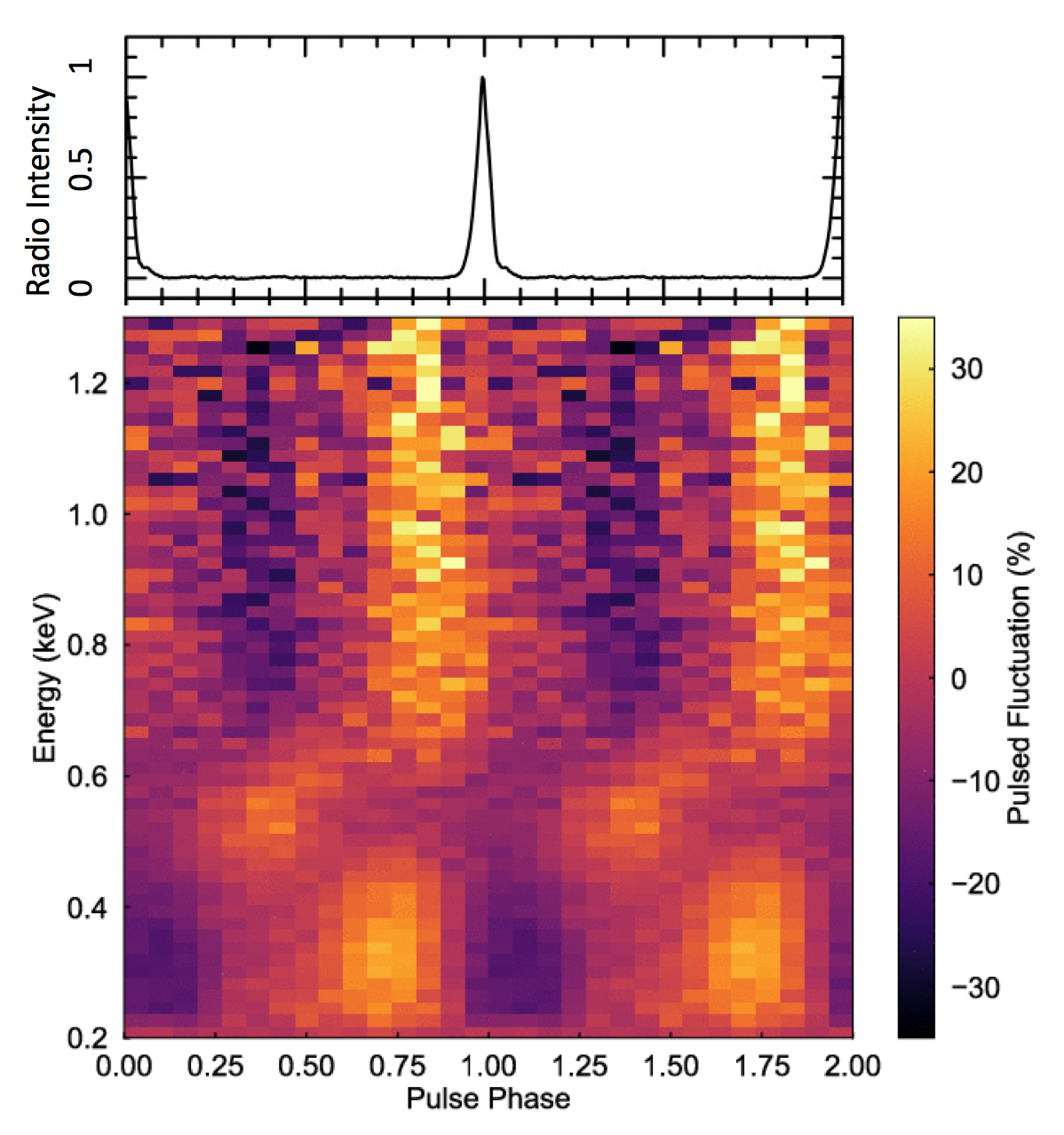NICER / ISS Science Nugget for September 28, 2018X-ray observations of PSR B0656+14 show multiple emission componentsIn studies of neutron stars, three famous X-ray pulsars – Geminga, PSR B0656+14, and PSR B1055-52 – are known as the Three Musketeers. The second of these, B0656+14, is a relatively bright radio and X-ray emitter that rotates once every 384 milliseconds, and NICER has been extensively monitoring it since launch. Using a precise spin ephemeris derived from radio pulse-timing observations, the NICER team obtained detailed measurements of the change of X-ray brightness as a function of X-ray energy and the neutron star's rotation phase (see figure).
The emission in the soft X-ray band is rich and complicated and comprises multiple components. The NICER data show three distinct hot spots that cover different energy bands and rotational phases – a cool thermal radiation component (peaking near photon energies of 0.3 keV, implying a temperature of approximately 700,000 Kelvin) from the entire neutron star surface, a hot spot (peaking for photons near 1 keV, or 1.3 million Kelvin) that is produced when high-energy particles in the pulsar magnetosphere impact the surface, and a more mysterious "spot" of intermediate temperature. We see that the X-ray emission peaks from these hot spots occur at different rotation phases, and that they are also different from the phases of the radio and gamma-ray peaks. The complex variation of temperature across the surface provides valuable insights into the strength, geometry, and evolution of the neutron star's magnetic field. NICER
|



